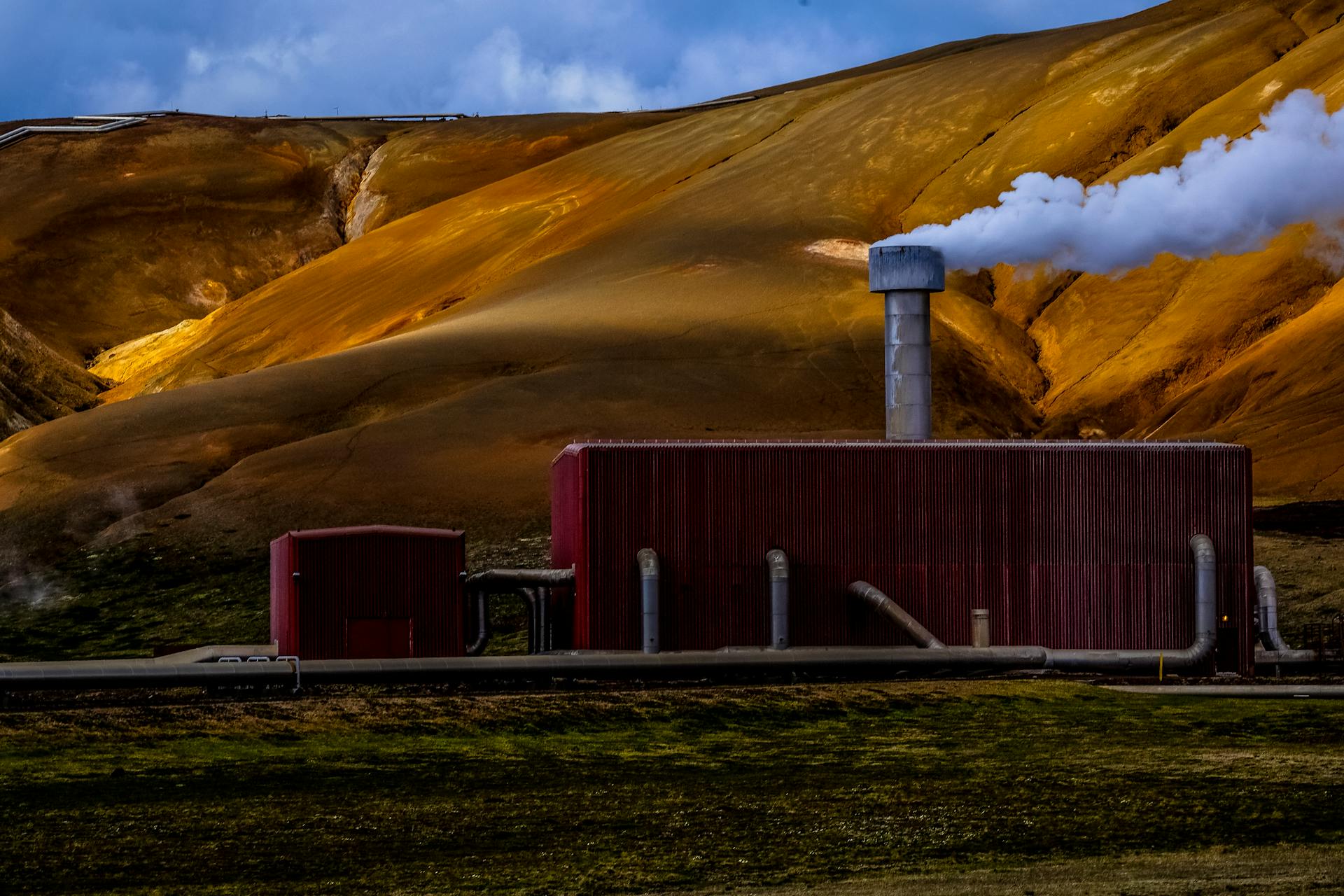
Parsons Marine Steam Turbine Company has been a leading provider of marine power solutions for over a century. Their expertise in steam turbine technology has enabled them to deliver efficient and reliable power to ships and other marine vessels.
The company's marine power solutions cater to a wide range of applications, from commercial shipping to naval vessels. Their turbines are designed to operate in harsh marine environments, ensuring maximum uptime and performance.
Parsons Marine Steam Turbine Company's marine power solutions are built to last, with many of their turbines still in operation after decades of service. This is a testament to the company's commitment to quality and durability.
History and Archives
Charles Algernon Parsons founded the Parsons Marine Steam Turbine Company in 1897 with £500,000 of capital. He had a vision to create a company that specialized in building steam turbine engines for marine use.
The first vessel powered by a Parsons turbine was Turbinia, launched in 1894. This was a significant milestone in the development of marine steam turbines.
Parsons' invention of the steam turbine was a game-changer in the field of electrical power generation. He built the first multi-stage reaction turbine in 1884, which paved the way for the development of turbo-generators.
Parsons turbines powered the Royal Navy's first turbine-powered battleship, HMS Dreadnought. They also powered the world's first turbine ocean liners, RMS Victorian and Virginian.
The company's early success was marked by the launch of the turbine-driven destroyer HMS Viper in 1899. This ship was capable of speeds of thirty knots, making it a significant achievement in marine engineering.
Parsons was a prolific inventor, holding three hundred patents in his career. He was elected a Fellow of the Royal Society in 1898 and knighted in 1911.
Intriguing read: Royal Mail Steam Packet Company
Operational Focus
The Parsons Marine Steam Turbine Company made a significant splash in the maritime world with its innovative technology. The company's first major success was the Turbinia, a turbine-powered yacht that stunned the British Navy with its incredible speed of 34 knots.
The Turbinia's slender hull contributed to its remarkable speed, which was significantly faster than the fastest Royal Navy ships at the time. This impressive performance caught the attention of the British Admiralty, leading to the company's establishment in 1897.
Parsons' turbines soon became the standard for many ships, including destroyers, passenger ships, and even battleships. The HMS Viper, launched in 1899, was one of the first turbine-driven destroyers, capable of speeds of 30 knots.
Steam Engine
Steam engines have a rich history, and one of the key milestones was the development of the steam turbine engine by Charles Parsons in 1884. Parsons' design was a game-changer, allowing for cheap and plentiful electricity.
The steam turbine engine was a major improvement over earlier designs, which were often limited by the materials used. Parsons' engine was capable of turning at 18,000 RPM.
Parsons' breakthrough was due in part to his understanding of the scaling issue, which he explained in his 1911 Rede Lecture. He realized that moderate surface velocities and speeds of rotation were essential for the turbine motor to be accepted as a prime mover.

One of the key features of Parsons' design was the use of multiple turbines in series, which helped to avoid the high velocities that were a problem with earlier designs. This approach allowed for more efficient use of steam and increased the overall output of the engine.
Parsons' steam turbine engine had a significant impact on marine transport and naval warfare, making it possible to generate cheap and plentiful electricity.
Marine Applications
Parsons' marine applications were a game-changer. He founded the Parsons Marine Steam Turbine Company in Newcastle, which went on to revolutionize the industry.
In 1897, Parsons' turbine-powered yacht, Turbinia, made a splash at the Navy Review for the Diamond Jubilee of Queen Victoria, reaching an impressive 34kn (63km/h; 39mph).
The Turbinia's speed was a significant improvement over other technologies, with the fastest Royal Navy ships reaching only 27kn (50km/h; 31mph) at the time.
Within two years, Parsons' turbines were powering destroyers like HMS Viper and Cobra, and by 1901, the first turbine-powered passenger ship, TS King Edward, was launched.
Parsons' turbines continued to gain traction, with the first turbine transatlantic liners, RMS Victorian and Virginian, being launched in 1905, and the first turbine-powered battleship, HMS Dreadnought, following in 1906.
Frequently Asked Questions
What is the history of Parsons steam turbine?
Parsons steam turbine has a rich history dating back to 1897 when Charles Algernon Parsons founded the company with a significant investment. The first vessel powered by a Parsons turbine, Turbinia, was launched in 1894, marking a significant milestone in marine engineering.
Sources
- https://www.wikiwand.com/en/articles/Charles_Algernon_Parsons
- https://en.wikipedia.org/wiki/Parsons_Marine_Steam_Turbine_Company
- https://appel.nasa.gov/2010/02/26/ao_1-13_f_parsons-html/
- https://www.gracesguide.co.uk/Parsons_Marine_Steam_Turbine_Co
- https://www.turbomachinerymag.com/view/how-parsons-marine-steam-turbines-powered-ships
Featured Images: pexels.com


